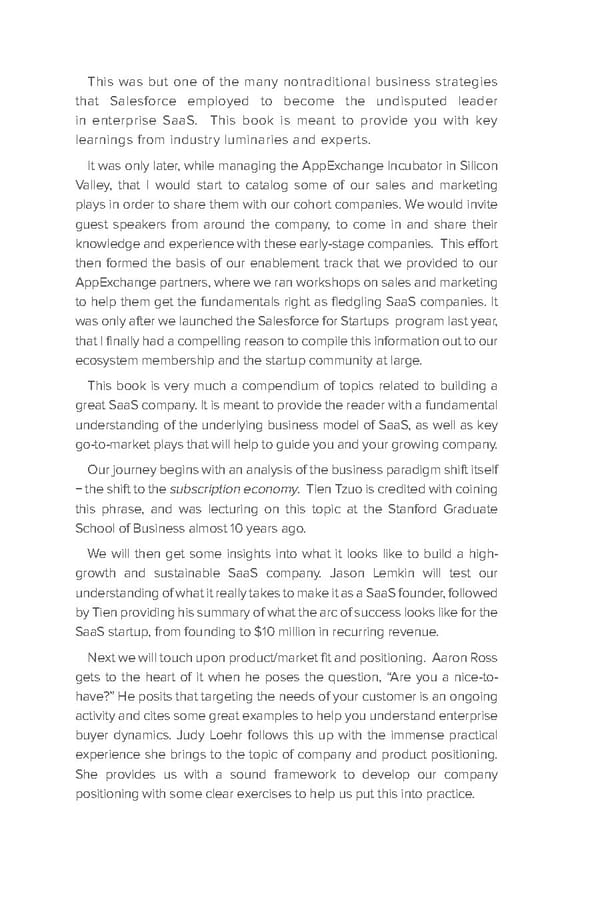Chapter 1 This was but one of the many nontraditional business strategies that Salesforce employed to become the undisputed leader in enterprise SaaS. This book is meant to provide you with key learnings from industry luminaries and experts. It was only later, while managing the AppExchange Incubator in Silicon Valley, that I would start to catalog some of our sales and marketing plays in order to share them with our cohort companies. We would invite guest speakers from around the company, to come in and share their knowledge and experience with these early-stage companies. This effort then formed the basis of our enablement track that we provided to our AppExchange partners, where we ran workshops on sales and marketing to help them get the fundamentals right as fledgling SaaS companies. It was only after we launched the Salesforce for Startups program last year, that I finally had a compelling reason to compile this information out to our ecosystem membership and the startup community at large. This book is very much a compendium of topics related to building a great SaaS company. It is meant to provide the reader with a fundamental understanding of the underlying business model of SaaS, as well as key go-to-market plays that will help to guide you and your growing company. Our journey begins with an analysis of the business paradigm shift itself − the shift to the subscription economy. Tien Tzuo is credited with coining this phrase, and was lecturing on this topic at the Stanford Graduate School of Business almost 10 years ago. We will then get some insights into what it looks like to build a high- growth and sustainable SaaS company. Jason Lemkin will test our understanding of what it really takes to make it as a SaaS founder, followed by Tien providing his summary of what the arc of success looks like for the SaaS startup, from founding to $10 million in recurring revenue. Next we will touch upon product/market fit and positioning. Aaron Ross gets to the heart of it when he poses the question, “Are you a nice-to- have?” He posits that targeting the needs of your customer is an ongoing activity and cites some great examples to help you understand enterprise buyer dynamics. Judy Loehr follows this up with the immense practical experience she brings to the topic of company and product positioning. She provides us with a sound framework to develop our company positioning with some clear exercises to help us put this into practice.
 Acknowledgments & Introduction Page 5 Page 7
Acknowledgments & Introduction Page 5 Page 7